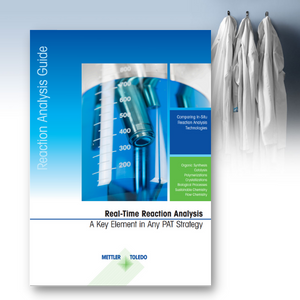Challenge: Investigate and develop a greener process for spherical particle formation and granulation of ethyl vanillin.
The synthetic flavor ethyl vanillin is widely used in a variety of consumer products, but practical challenges related to storage and caking hinder its further large-scale application. Preferentially forming spherical particles can mitigate these issues, making downstream processing more efficient and resulting in enhanced product quality. However, standard methods for spherical crystallization often involve dangerous and expensive organic solvents. This work describes the development of an oiling-out spherical agglomeration technology that eliminates the need for organic solvents, providing a greener and more cost-effective process. Researchers used process analytical technologies to investigate the oiling-out phenomenon of ethyl vanillin in aqueous solution. Mechanistic insight gained from monitoring changing solute concentration via FTIR (ReactIR), as well as particle count and morphology via EasyViewer and ParticleTrack G400 (FBRM-based probe) enabled the preferential formation of spherical particles in an aqueous solution of sodium chloride using a straightforward heating and quenching process. The resulting ethyl vanillin spherical product has excellent powder properties, high flowability and high yield, making it not only more environmentally friendly to produce, but also a higher quality product.
“In view of the current problems of too fast aroma release rate and poor powder properties of ethyl vanillin, this work systematically investigates the oiling-out phenomenon and the formation mechanism of spherical particles of ethyl vanillin in an aqueous solution. With the help of process analytical technologies (ATR-FTIR, FBRM and EasyViewer), two types of oiling-out phenomena of ethyl vanillin in water are found to occur with temperature changes. Further, the results of IR spectra showed that the intrinsic reason for the appearance of two oiling-out phenomena of ethyl vanillin in water is the switching of different kinds of intermolecular hydrogen bonds induced by solvation…Spherical particles of ethyl vanillin are successfully prepared in the aqueous solution of sodium chloride by the oiling-out spherical agglomeration technology. This green technology eliminates the use of hazardous solvents and combines the two unit operations of crystallization and granulation, which is especially suitable for the food industry.”
Liu, Y., Wang, S., Li, J., Guo, S., Yan, H., Li, K., Tong, L., Gao, Y., Li, T., Chen, M, Gao, Z. & Gong, J. (2023). Preparation of Ethyl Vanillin Spherical Particles With Functions of Sustained Release and Anti-caking by an Organic Solvent-Free Process. Food Chemistry, 402, 134518. https://doi.org/10.1016/j.foodchem.2022.134518















